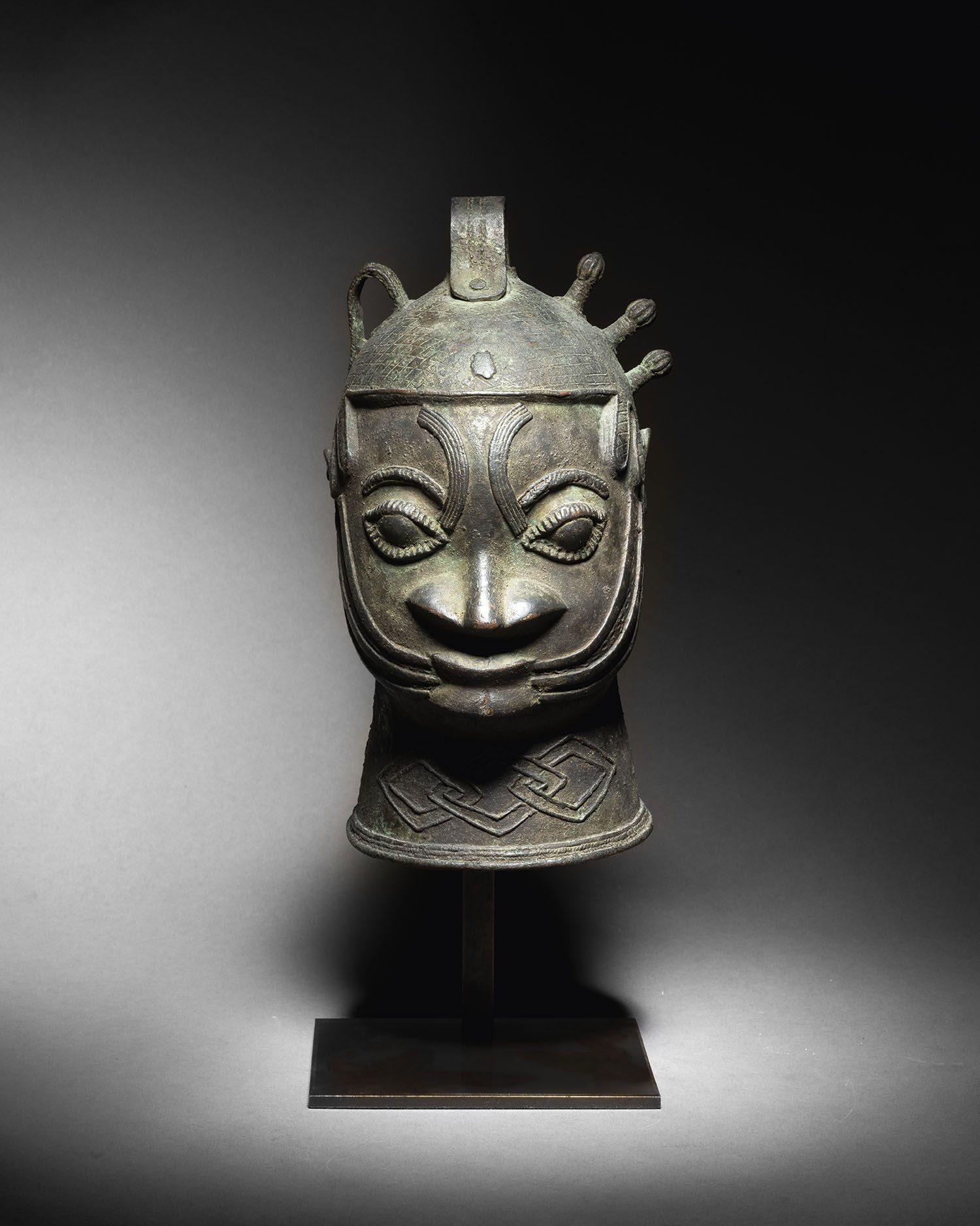Description
Anthropomorphic Owo bell, Ijebu Kingdom, Nigeria Copper H. 24 cm Anthropomorphic Owo bell, Ijebu Kingdom, Nigeria H. 9 7/16 in Rare and beautiful anthropomorphic bell which is distinguished by its plastic qualities and the admirable mastery of its casting. This type of bell, called Omo, was the prerogative of the high dignitaries of Ijebu. They were worn on a large harness or cord on the left shoulder that fell on the hip and would have been used to announce the arrival of important people. They would play a role in ceremonies of enthronement or transmission of power.
55
Anthropomorphic Owo bell, Ijebu Kingdom, Nigeria Copper H. 24 cm Anthropomorphic Owo bell, Ijebu Kingdom, Nigeria H. 9 7/16 in Rare and beautiful anthropomorphic bell which is distinguished by its plastic qualities and the admirable mastery of its casting. This type of bell, called Omo, was the prerogative of the high dignitaries of Ijebu. They were worn on a large harness or cord on the left shoulder that fell on the hip and would have been used to announce the arrival of important people. They would play a role in ceremonies of enthronement or transmission of power.
You may also like
